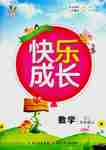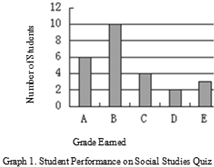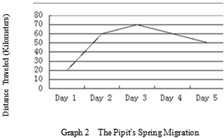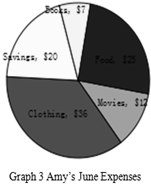题目内容
16.文中共有10处语言错误,每句中最多有两延.每处错误仅涉及一个单词的增加、删除或修改.增加:在缺词处加一个漏字符号(∧),并在其下面写出该加的词.
删除:把多余的词用斜线(\)划掉.
修改:在错的词下画一横线,并在该词下面写出修改后的词.
注意:1.每处错误及其修改均仅限一词;
2.只允许修改10处,多者(从第11处起)不计分.
Chengdu is a famous city with long history.Locating in the southwest of China,it is the capital city of Sichuan Province,it is called"the Land of Abundance".It is said that Chengdu got its name over 2000 years ago and it had never changed since then.There are a large number of famous cultural sites and delicious snacks here,which have always been attraction to tourists from around the world.Tourists come not only see the historical sites and taste the snacks,but also because that it has beautiful scenery.A walk in the side of the beautiful Jinjiang River will offer a feast for anyone's eyes.In a word,Chengdu,as a famous saying went,is a city that you mustn't leave once you have come.
分析 本文主要介绍了历史文化名城:成都.它有二千多年的历史,有许多著名的文化遗址和美味的快餐,还有美丽的风景.
解答 Chengdu is a famous city with∧long history.Locating in the southwest of China,it is the capital city of Sichuan Province,it is called"the Land of Abundance".It is said that Chengdu got its name over 2000 years ago and it had never changed since then.There are a large number of famous cultural sites and delicious snacks here,which have always been attraction to tourists from around the world.Tourists come not only∧see the historical sites and taste the snacks,but also because that it has beautiful scenery.A walk in the side of the beautiful Jinjiang River will offer a feast for anyone's eyes.In a word,Chengdu,as a famous saying went,is a city that you mustn't eave once you have come.
详解:
1.加a 考查冠词.history意为"历史",是不可数名词,但有形容词修饰时要带不定冠词a,构成短语:with a long history意为"有着悠久的历史".
2.Locating改为Located 考查过去分词.Locate是及物动词,意为"使…坐落于",be located in意为"…坐落于",是常用短语.
3.it改为which 考查定语从句.分析句子结构可知这是一个定语从句,先行词Sichuan Province在从句中作主语,用关系代词which.
4.had改为has 考查动词时态.根据句中时间状语since then,用现在完成时.
5.attraction改为attracive 考查形容词.be attractive to sb.意为"对…有吸引力",是固定搭配.
6.加to 考查动词不定式.此处动词不定式表示目的,作目的状语.
7.去掉that 考查连词.本句中because 是连词,意为"因为",不再需要连词了,that是多余的,要去掉.
8.in改为along 考查介词.本句表示的是沿着金江河散步,in意为"在…里",along意为"沿着",用along.
9.went改为goes 考查动词时态."正如一个著名的谚语所说"用英语表达是:as a famous saying goes.
10.that改为where 考查定语从句.分析句子结构可知这是一个定语从句,先行词city在从句中作地点状语,用关系副词where.
点评 高考短文改错题的形式有说明文,短文故事,书信等,具有很强的实用性.短文的内容和语言都符合高中学生的实际,从表面上看类似一篇学生习作.首先,通读全文,了解短文大意,把握全篇的时态、人称及行文逻辑,在通读全文时把一些容易的错误先改好,再进行逐句改错.其次,要进行逐个句子的改错.这是要对文中的词法、句法和语篇着重分析和特别注意.最后把改好的短文再阅读一遍,检查答案是否正确,感觉是否还有不妥之处,最终形成定稿.

 优质课堂快乐成长系列答案
优质课堂快乐成长系列答案Graphs can seem frightening,but reading a graph is a lot like reading a story.The graph has a title,a main idea,and supporting details.You can use your active reading skills to analyze and understand graphs like any other text.
Most graphs have a few basic parts:a caption or introduction paragraph,a title,a legend or key,and labeled axes.An active reader looks at each part of the graph before trying to interpret the data.Captions will usually tell you where the data from (for example,a scientific study of 400 African elephants from 1980 to 2005).Captions usually summarize the author's main point as well.The title is very important.It tells you the main idea of the graph by stating what kind of information is being shown.A legend,also called a key,is a guide to the symbols and colors used in the graph.Many graphs,including bar graphs and line graphs,have two axes that form a corner.Usually these axes are the left side and the bottom of the graph.Each axis will always have a label tells you what each axis measures.
| Bar Graphs A bar graph has two axes and uses bars to show amounts.In Graph 1,we see that the x-axis shows grades students earned,and the y-axis shows how many students earned each grade.You can see that 6 students earned an A because the bar for A stretches up to 6 on the vertical measurement.There is a lot of information we can get from a simple graph like this (See Graph 1) |  |
| Line Graphs A line graph looks similar to a bar graph,but instead of bars,it plots points and connects them with a line.It has the same parts as a bar graph---two labeled axes---and can be read the same way.To read a line graph,it's important to focus on the points of intersection rather than the line segments between the points.This type of graph is most commonly used to show how something changes over time.Here is a graph that charts how far a bird flies during the first five days of its spring migration (See Graph 2). |  |
Pie Graphs
A typical pie graph looks like a circular pie.The circle is divided into sections,and each section represents a fraction of the data.The graph is commonly used to show percentages; the whole pie represents 100 percent,so each piece is a fraction of the whole.A pie graph might include a legend,or it might use icons or labels within each slice.This pie graph shows one month's expenses(See Graph 3).
Food 25 Movies12 Clothing 36Savings20 Books $7

45.When used in a graph,a legend isA.
A.a guide to the symbols and colors
B.an introduction paragraph
C.the main idea
D.the data
46.What is the total number of students who earned a C or better?D
A.4.
B.6.
C.10.
D.20.
47.The bird covered the longest distance onC.
A.Day 1.
B.Day 2.
C.Day 3.
D.Day 4.
48.Which of the following cost Amy most?D
A.Food.
B.Books.
C.Movies.
D.Clothing.